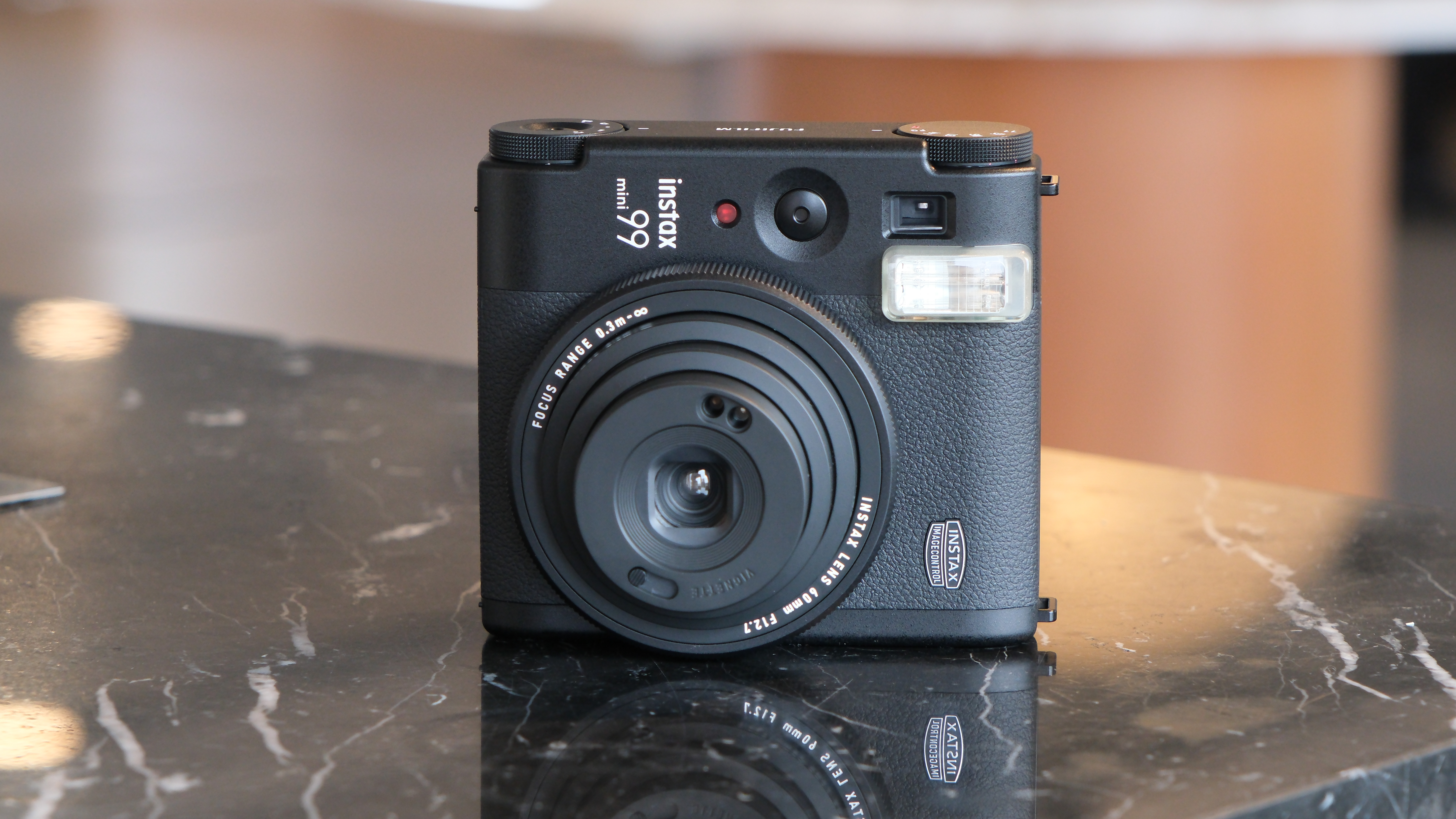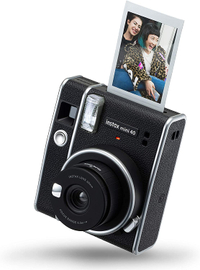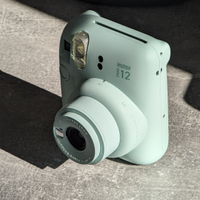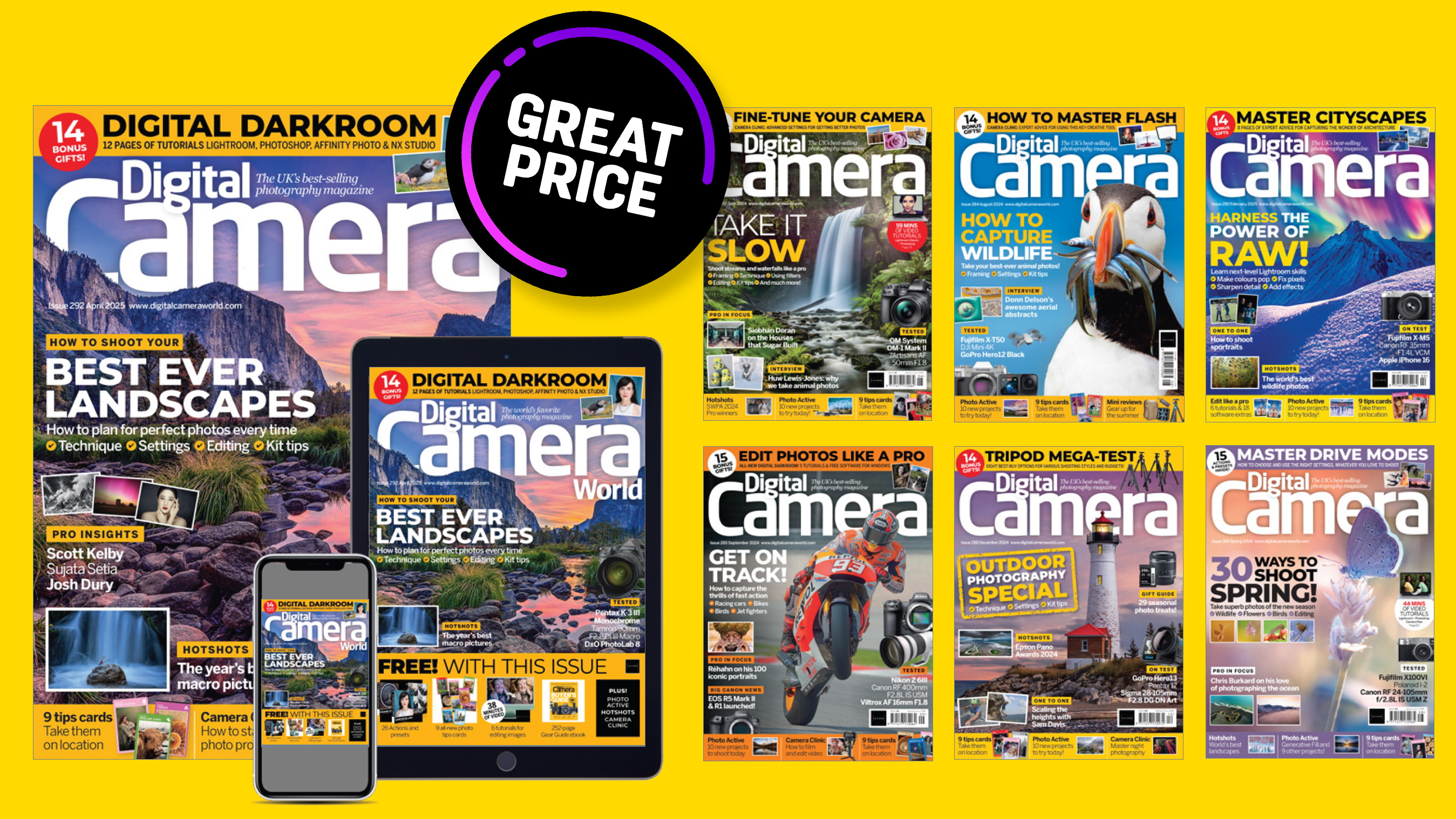Digital Camera World Verdict
The Instax Mini 99 takes Fujifilm’s instant cameras to new creative heights, offering the most advanced controls yet for fine-tuning images, but also the most ways to have fun with any Instax camera so far. Where LED light effects could have been gimmicky and tacky, they add a new creative element that I couldn’t stop playing with. The Instax Mini 99 is also my favorite-looking Instax camera yet. No bright colors here – the camera further refines a classic design that should suit everyone.
Pros
- +
LED light effects work really well
- +
Creative controls for fine-tuning images
- +
The best-looking Instax camera yet
Cons
- -
Extra features might not be worth the price premium
- -
No selfie mirror
- -
Environmental impact of disposable parts
Why you can trust Digital Camera World
The best instant cameras continue to be unstoppably popular around the world, with so many people still enjoying the very unique experience of instant print photography, especially in an increasingly digital world where snapping dozens of photos a day of things around you is a normal part of life.
So where does the Instax Mini 99 fit in? After all, the Instax range is already very mature – especially the Mini line, with well over a dozen different models in the analog camera line (not to mention digitals and hybrids like the Instax Mini LiPlay and Mini Evo).
Perhaps this is why Fujifilm, rather than giving us another basic budget option, has decided to offer a more advanced camera in the form of the Instax Mini 99. It may also have something to do with Polaroid offering an advanced camera of its own, in the form of the Polaroid Now+ Generation 2.
Regardless of the reasoning, the Instax Mini 99 is the most advanced and serious Instax camera that Fujifilm has released to date, with a genuine focus on photographic skill and creativity. Although that doesn’t mean it loses any part of the Instax formula for fun, with new creative modes and special effects, this is the best of both worlds.
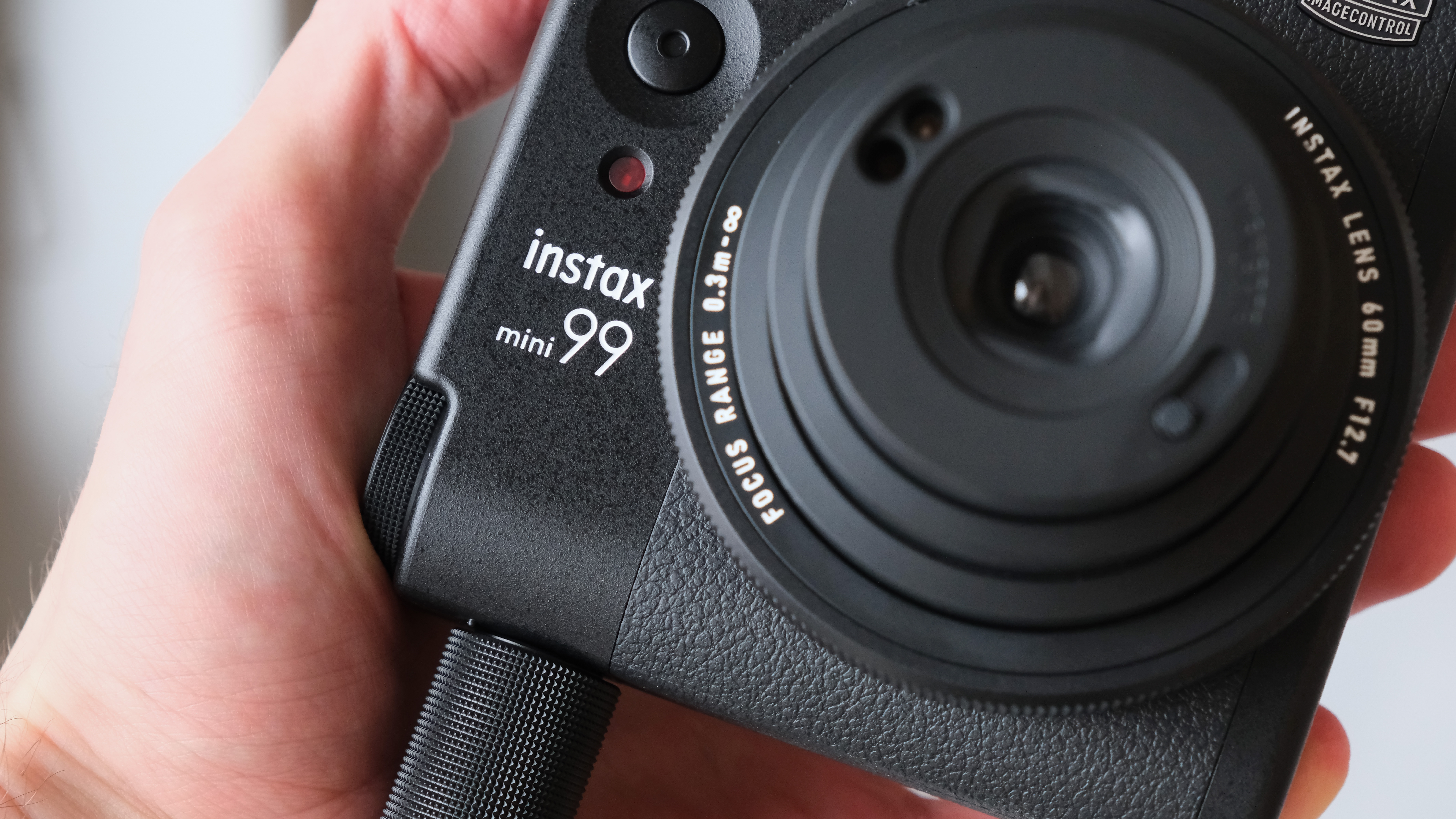
Instax Mini 99: Specifications
| Film used | Fujifilm Instax Mini Film (62 mm × 46 mm) |
| Lens | Manual focus 0.3m to ∞, 60 mm, 1:12.7 |
| Viewfinder | 0.37×, parallax correction for Macro Mode |
| Shutter | Auto 1.8 to 1/400 seconds, Bulb Mode (max 10 sec) |
| Exposure control | Automatic: LV 5.0 to 14.8 (ISO 800) |
| Exposure compensation | –5/3EV, –2/3EV, +2/3EV, +1EV |
| Flash | Automatic flash (automatic light adjustment), Indoor Mode (slow synchro flash), Fill-in flash, Flash off, Red-eye removal |
| Effective flash range | 0.3 m to 2.7 m |
| Power supply | Battery NP-70S, approx. 100 shots |
| Auto power off | 5 minutes |
| Self-timer | 10 seconds |
| Dimensions | 103.5 × 117.5 × 60.0 mm |
| Weight | 340 g (without battery, shoulder strap, and film) |
Instax Mini 99: Price
The Instax Mini 99 costs $199.95 / £174.99 / AU$279 at launch. In the realm of instant-print Instax cameras, this is a hefty $100 / £75 / AU$100 more expensive than the Instax Mini 40, which shares the same camera aesthetic and Instax mini film but lacks some of the new manual controls. It is a tricky decision whether these new features are worth the price premium if you won’t use them frequently. Instant print cameras are about spontaneity and fun which both cameras provide.
The Mini 99 is also the exact same price as the Instax Mini Evo. These are fundamentally different cameras, with the Evo being a digital camera that prints to Instax Mini film, while the Mini 99 is all manual. However, there is some crossover in features, with the Evo offering film effects similar to the Mini 99 – although applied digitally. The Evo can also print photos from a phone in the same way. The decision here really depends on if you want the authentic analog experience, or if you’re fine with a bit of digital fakery.
Instax Mini 99: Design & Handling
The Mini 99 is in my opinion the best-looking Instax camera so far. It shares the same smart classic aesthetic as cameras like the Instax Mini 40, with none of the bright colors of the Instax Mini 12 or SQ1, this does make it a less playful and perhaps less Instagramable camera though. Despite its higher price the Instax Mini 99 is still quite plastic-y, but it does have a solid quality to it, and it doesn’t feel nearly as cheap as the Mini 12.
The design won’t be unfamiliar to anyone who has used an Instax Mini camera before, it has the usual body shape and hallmarks like a twist lens and small eyepiece to look through, so anybody should be able to pick up the camera and almost immediately begin taking photos. But that’s where the similarities to previous cameras end, with the Instax Mini 99 being the most advanced and, therefore, most complicated Instax camera yet.
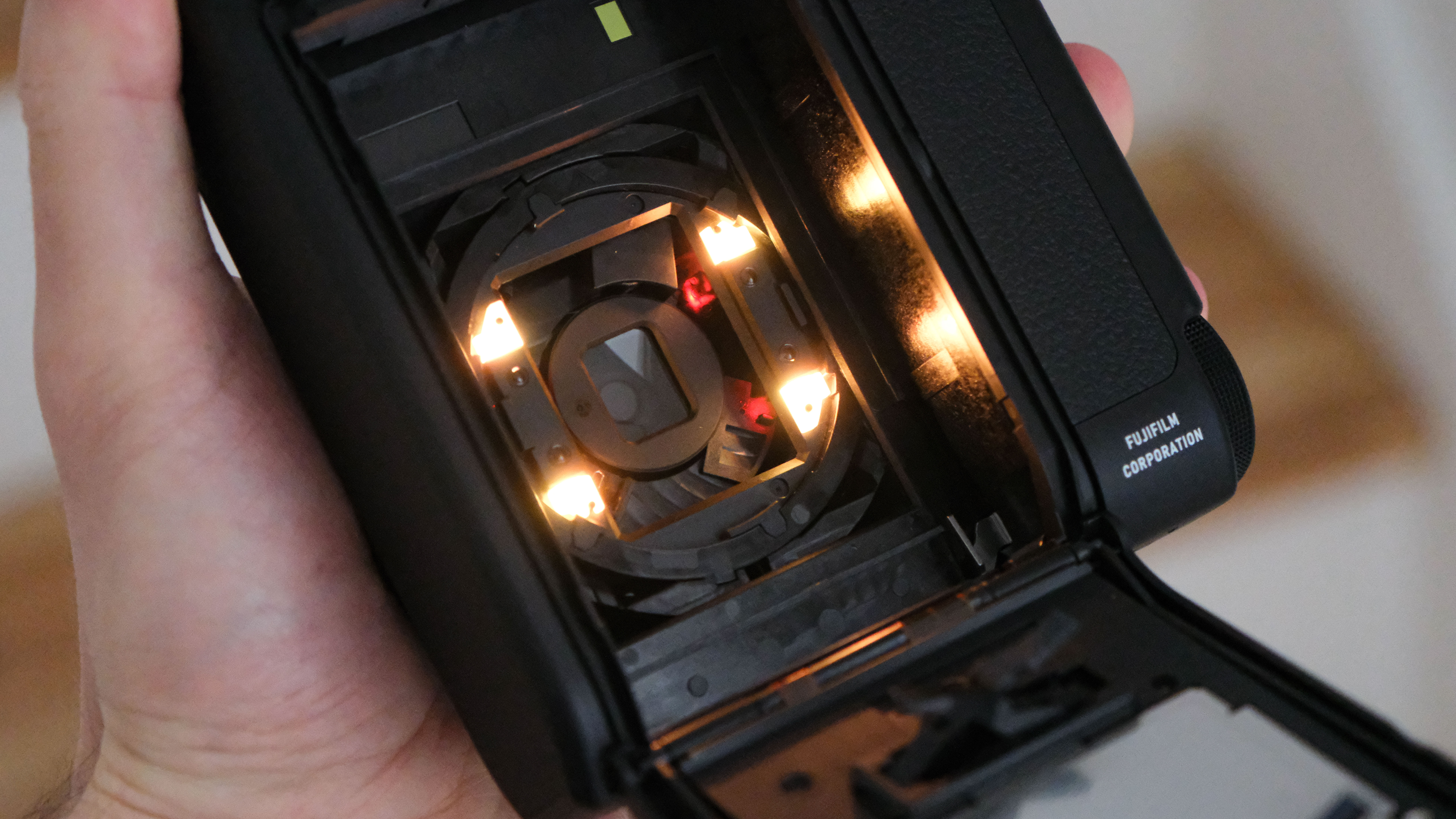
Starting with that twist lens. Fujifilm has added a few new focus zones, the macro/selfie zone found on other cameras for subjects between 0.3-0.6m from the camera is still present, but the otherwise catch-all focus from other Instax cameras is now separated into Standard Mode for anything in between 0.6m and 3.0m, and Landscape Mode for everything from beyond 3.0m.
Instax cameras aren’t exactly bokeh monsters, so don’t expect any dramatic blur effect on images from changing focus, but it does offer the best way to limit missed focus on an Instax camera by making you think a little harder about where your subject is, although this does rely on you being able to visualize distances accurately.
There is also a small switch on the front of the lens which pops out a small plastic circle around the edge of the lens to add some fake vignetting to images. This isn’t something that I have ever really considered I needed for my Instax Mini prints as it's rare I want to make my already average quality images look worse, but maybe this sounds exciting to someone.
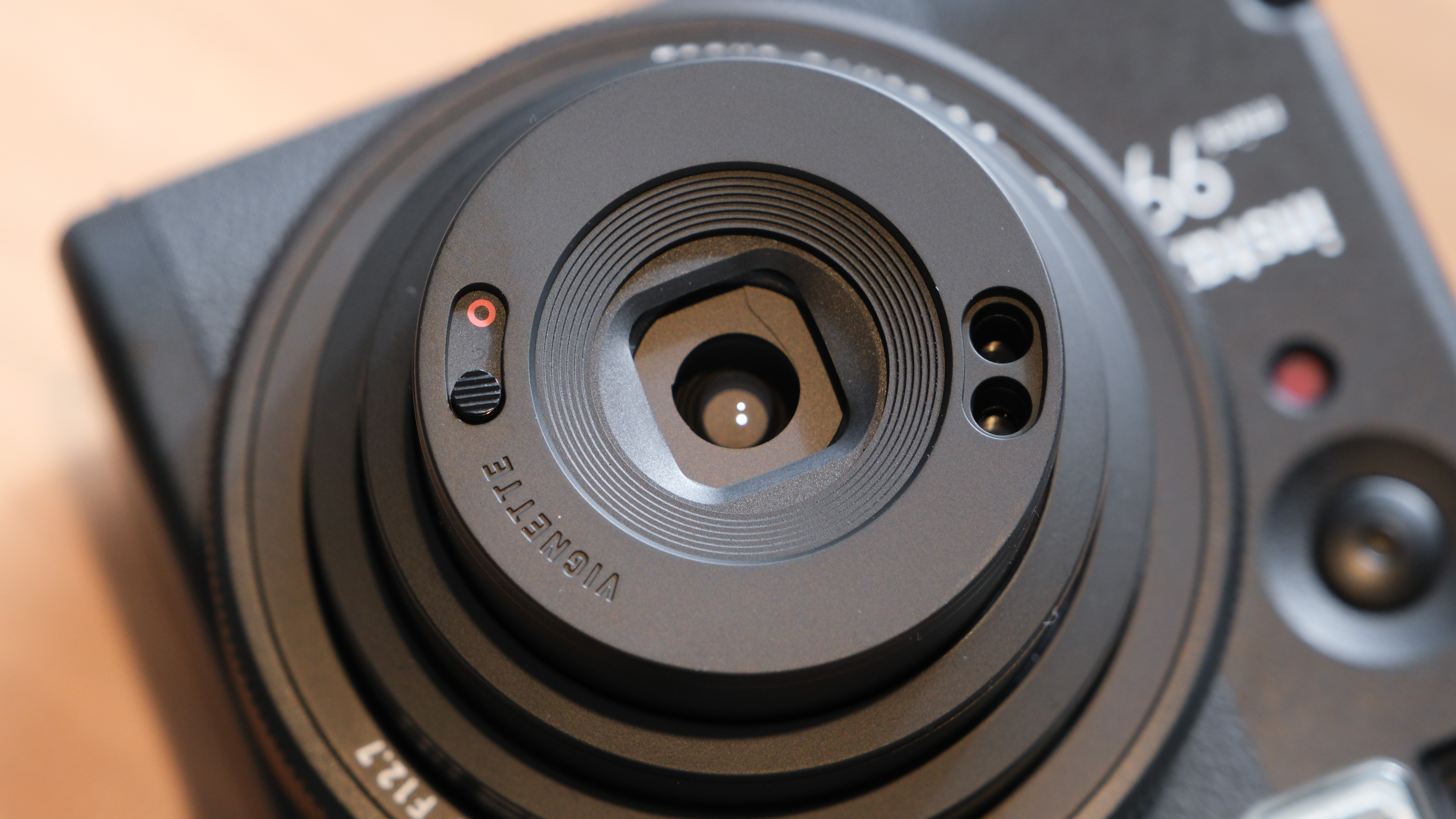
An interesting, but perhaps unnecessary addition to the Mini 99 is the new base grip which also doubles as a tripod mount. I didn’t really find the camera hard to hold, so I didn’t find the additional grip all that helpful, and just ended up taking it off very quickly each time I attempted to use the camera with it as it was more of a hindrance. You can also use this to mount the camera to a tripod, which should make the process a little easier than trying to connect the tripod directly, but carrying (and not losing) this grip accessory doesn’t seem worthwhile.

Up top on the camera, the left dial offers the first time any sort of exposure compensation has been included on an Instax instant camera. The exposure is fairly rudimentary, with two stops over and two stops under compensation, but these are full stops only and are not broken down into third-stops like more advanced cameras.
The other dial on the top controls the Instax Mini 99’s new creative lighting effects. The creative lighting system uses four LED lights positioned inside the camera around the lens that flash different colored lights during film exposure to create unique effects on the film. I found I could actually see these lights at work when I opened the back with no film in the camera and fired off a few shots. As well as shooting in standard or Neutral, you can also shoot using Faded Green, Warm Tone, Light Blue, Soft Magenta, Sepia, and Light Leak.
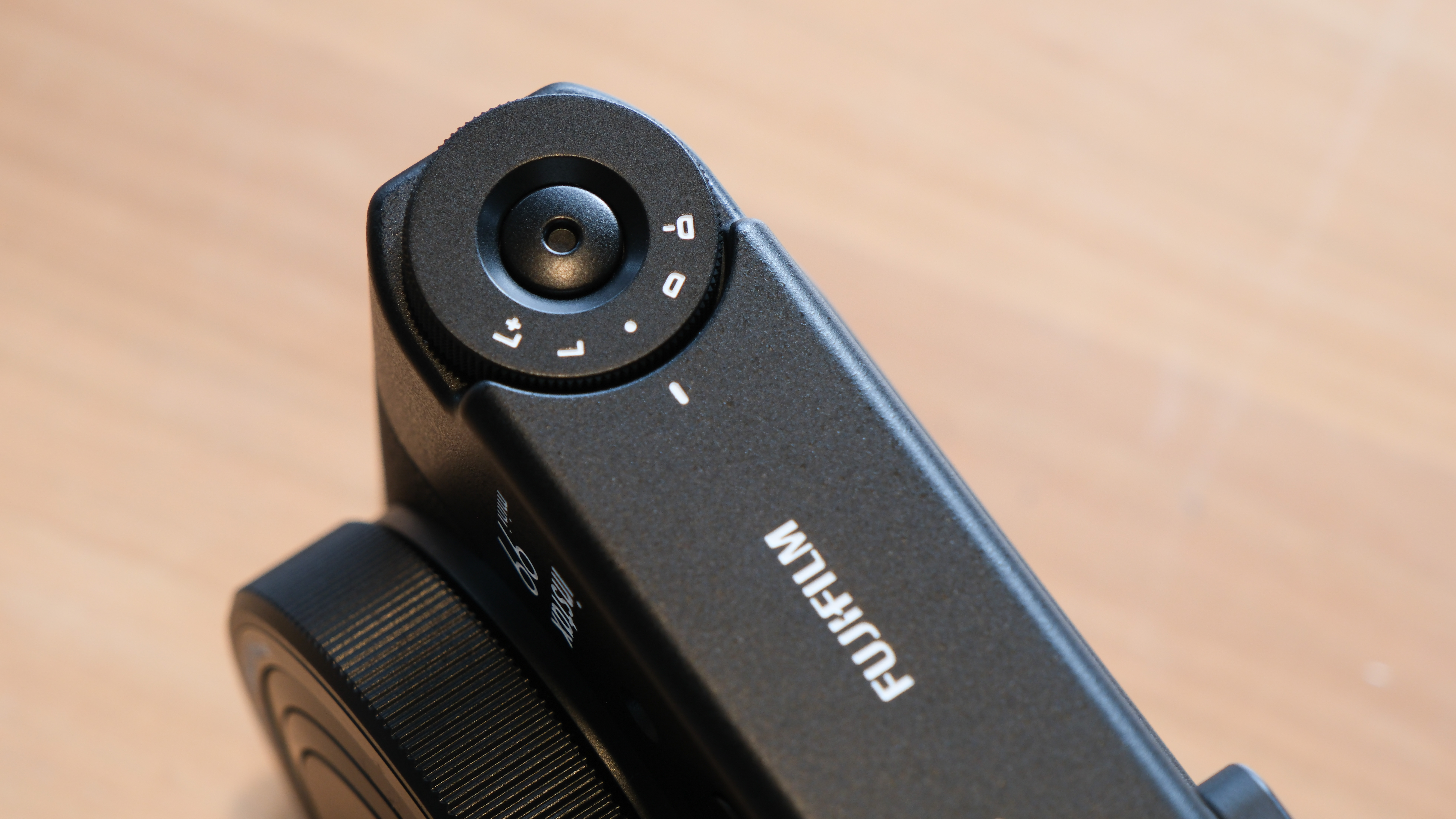
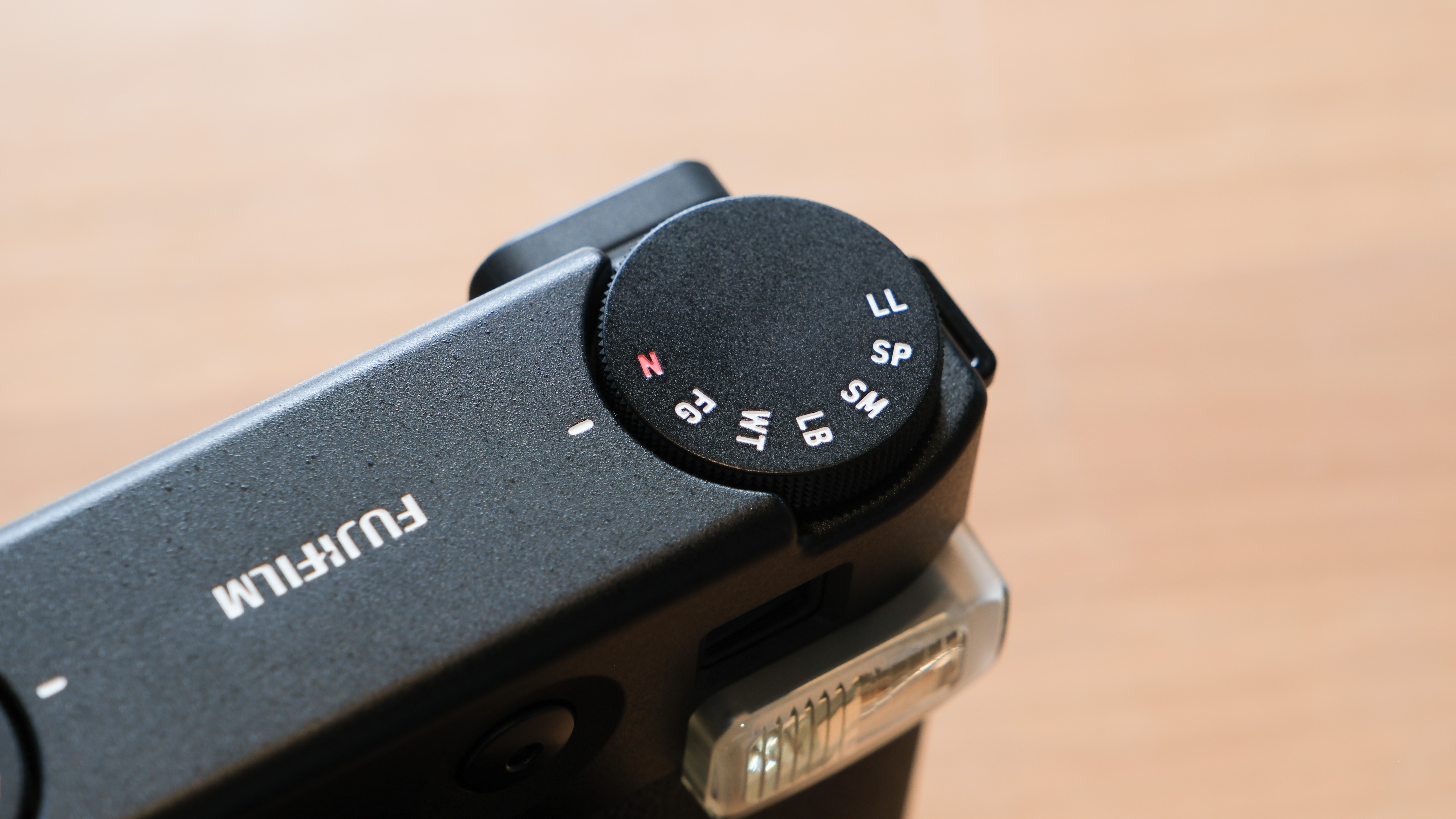
Completing the advanced controls, there are three buttons on the rear of the camera. The most exciting (for me anyway) is you can now finally turn off the flash, which will make photos outside in good light look a little more natural. There is also the option for a self-timer for group shots. Finally, the camera can be tuned for different shooting scenarios, there is Sports Mode, increasing the shutter speed for action shots; Indoor Mode which balances exposure for indoor lighting; Bulb Mode for longer exposures letting in more light for brighter images; and Double-Exposure Mode for... double exposures.
All the settings can now be tracked on the small screen on the rear, although don’t expect much from this screen with its sole purpose just to display symbols for which mode you are in – think Casio Watch or Tamagotchi. This is also where you keep track of your film count as the usual little porthole for the film countdown has gone from this model.
Speaking of things that have been removed from the Mini 99, for some unexplained reason this camera no longer has a selfie mirror. With one of the main purposes of Instax cameras being selfies and group shots, especially at large events like weddings, it seems like a very odd decision to me to not put a selfie mirror on this model. I personally would gladly swap the vignette switch for a selfie mirror.
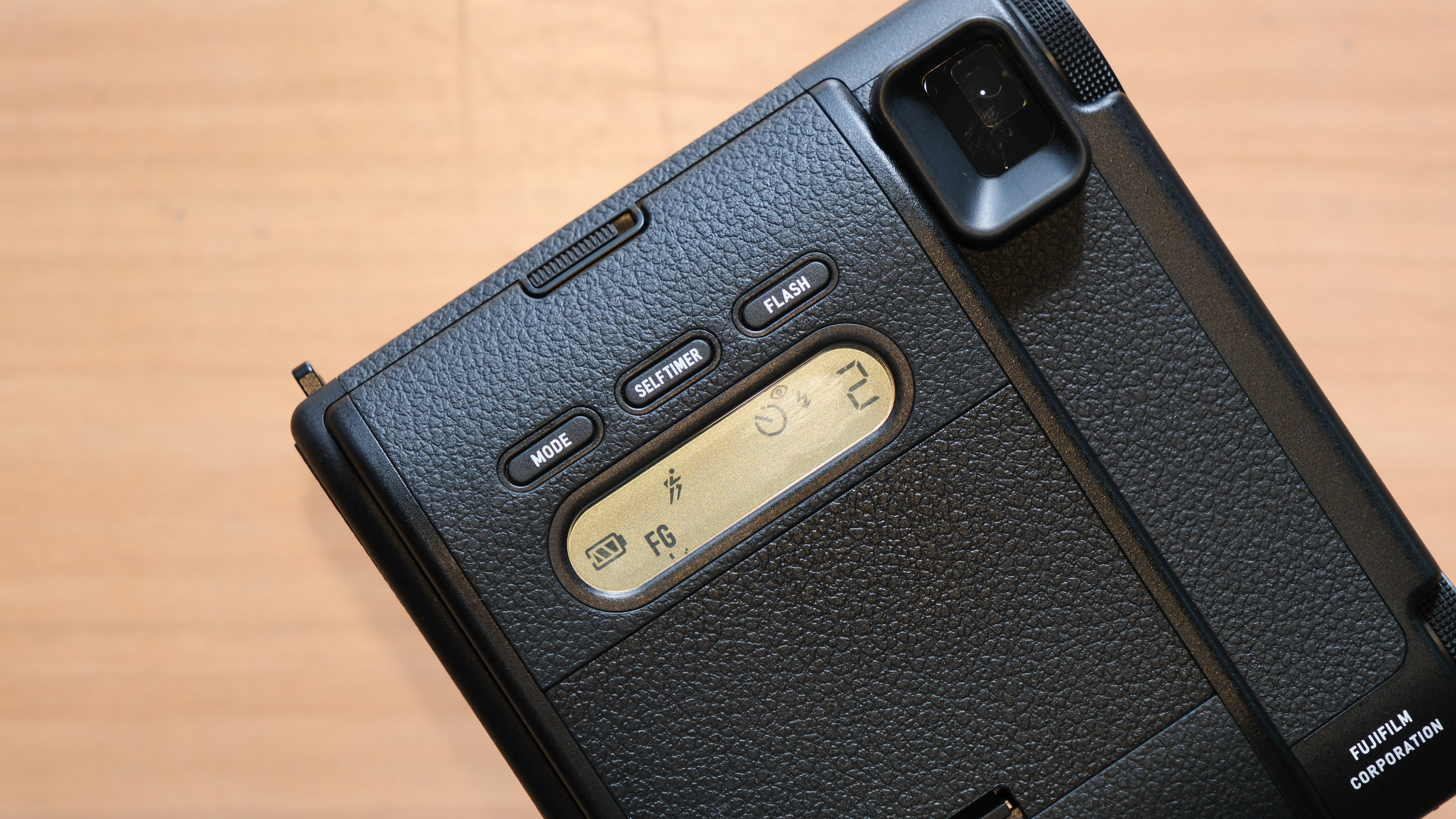
Instax Mini 99: Performance
What can be said about Instax Mini film that hasn’t been said already? The quality of Instax film is what it is, with its own unique blend of sharpness, color science, and strong contrast. In the Instax vs Polaroid film debate, I have always found Instax film to be far more consistent and reliable.
The image quality of the film spat out of the Instax Mini 99 is great, all my test shots shot in normal modes had fairly accurate and saturated color, with nice skin tones, and subjects were as sharp as I have seen on an Instax Mini instant camera yet, which has definitely been helped by the new zone focusing lens.
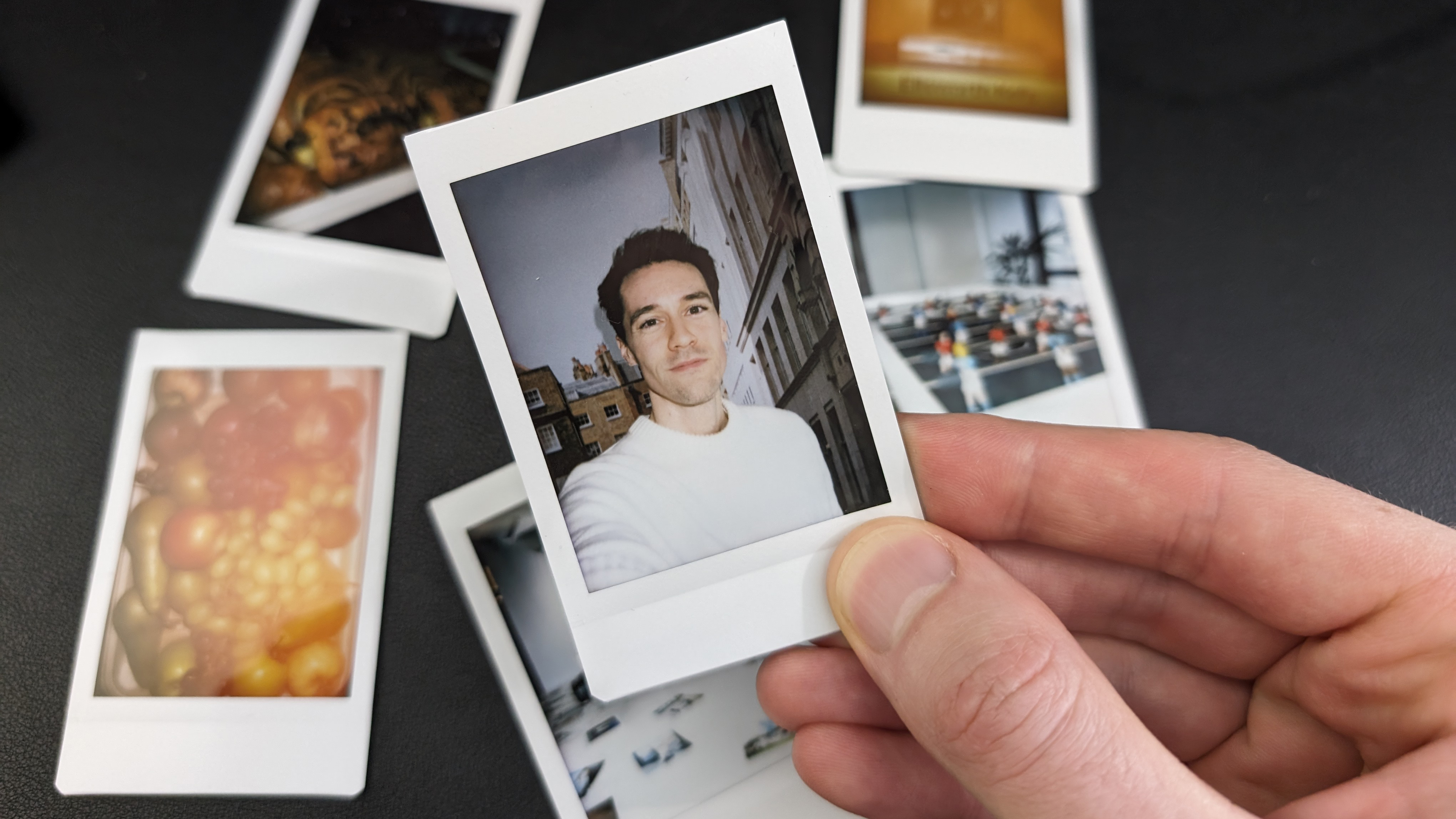
I tested out several of the creative modes and was very pleasantly surprised at how well the images came out. I thought shots would look really tacky and over the top, but the effects are very successful at walking the line between looking naturally done and not too filter-y. Some styles are more effective than others, but the effects should suit a range of personal tastes and styles, my personal favorite is the light leaks effect, which is the effect I can see myself using often.
Although that might be my main issue with the Instax Mini 99, I am not sure how often I would actually use all these effects to make the Mini 99 worthwhile over lesser cameras in the range. The effects are fun to play around with, but several shots I also came away wishing I had the non-effect version of the shot as well, which is where the Instax Mini Evo might actually be a better prospect for me and others who feel the same.

However, the other new controls though are certainly enough to win me over to Mini 99 above any other Instax instant camera. The self-timer is going to be one of my most used features, as I tend to take a lot of group shots with my family or friends, and I can finally avoid having that awkward arm reaching up to hold the camera.
I am also personally very happy to now have the option to switch off the flash. I love to shoot outdoors in the park or at the beach with Instax, but shooting outdoors in the sun with the flash in previous Mini cameras could leave photos noticeably artificially lit, not to mention attracting unwanted attention. In good light flashless photos still come out really well.
Double exposures have also been really fun to play with, and the Mini 99 handles them really well. In the several I took the camera managed to expose and overlay each shot really effectively. Overall this is the most impressively versatile and creative Instax instant camera yet.
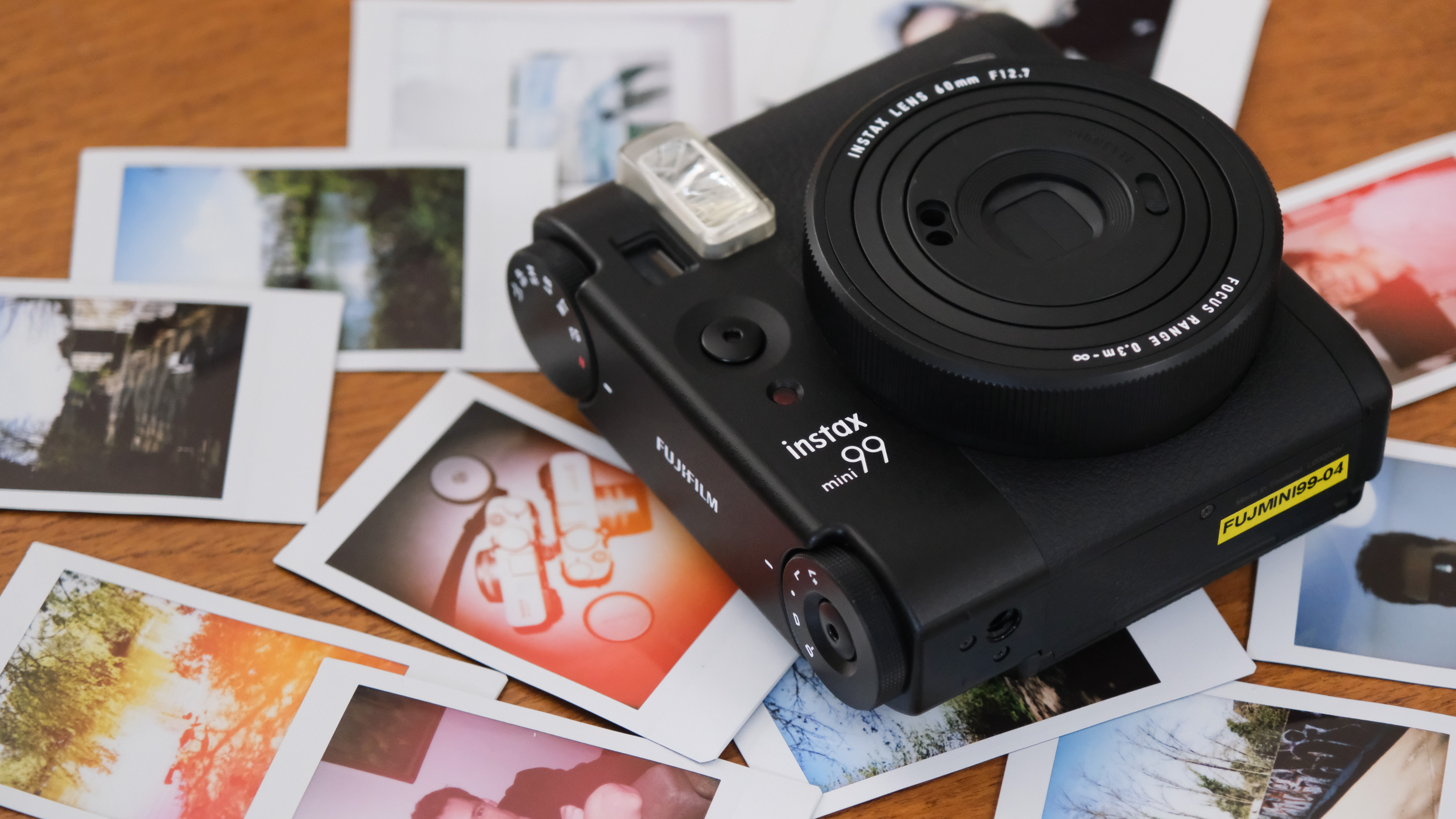
Instax Mini 99: Verdict
The Instax Mini 99 is the best version of Instax’s instant print cameras yet. It offers some very welcome advanced controls that give a new level of precision control and creativity. The new LED lighting effects are very well done, with the stylized effects being measured and controlled, and genuinely usable rather than gimmicky. But for me, I am not sure I would use the effects frequently enough to pay the premium for the Mini 99 for these effects alone.
Luckily there are enough new advanced controls I would definitely get a lot more use out of. As a photographer, the options of flash controls, self-timers, zone focus, and more adjusted shooting modes for different subjects make it an easy decision that the Instax Mini 99 is the instant camera for me as it is the best photography experience in the Instax range. The Mini 99 is my favorite looking and feeling Instax Mini camera to date, with the refined look and controls offering a classic experience.
The price, however, might well be an issue. The Mini 99 is the most expensive instant Mini yet, and anyone looking for a simple and automatic point-and-shoot experience would still be better served by the much cheaper Instax Mini 40 or Mini 12. The Mini 99 also costs the same as the Instax Mini Evo, so is a tough choice of analog versus digital, with the Evo offering more value as a remote printer for your iPhone snaps as well – but lacks the thrill of a sometimes imperfect instant camera experience.

✅ Buy this if...
- You want more advanced controls over fine-tuning how your Instax print will look
- You want to create in-camera effects on your instant photos
- You love the classic design of Instax cameras rather than the colorful Mini 12
🚫 Don't buy this if...
- You want to instant prints larger than the 62 mm × 46 mm dimensions of Instax Mini film
- You take a lot of selfies and will miss the selfie mirror for perfect alignment
- You just want a simple point-and-shoot instant camera with minimal controls
Alternatives
Instax Mini 40
The Instax Mini 40 looks very similar in design to the Instax Mni 99 but misses out on the newer models' finer controls and inbuilt creative lighting. However, the Mini 40 can be had at a much cheaper price, making this a great option for anyone who won't get the most out of the Mini 99's creative features.
Instax Mini 12
The Mini 12 is the entry-level Instax Mini camera and a great option for anyone who wants a simple and fun-to-use instant print camera without the hassle of having to think about any settings. It is also the cheapest model in the Instax range, so you can make some serious savings over the Mini 99.

Gareth is a photographer based in London, working as a freelance photographer and videographer for the past several years, having the privilege to shoot for some household names. With work focusing on fashion, portrait and lifestyle content creation, he has developed a range of skills covering everything from editorial shoots to social media videos. Outside of work, he has a personal passion for travel and nature photography, with a devotion to sustainability and environmental causes.
